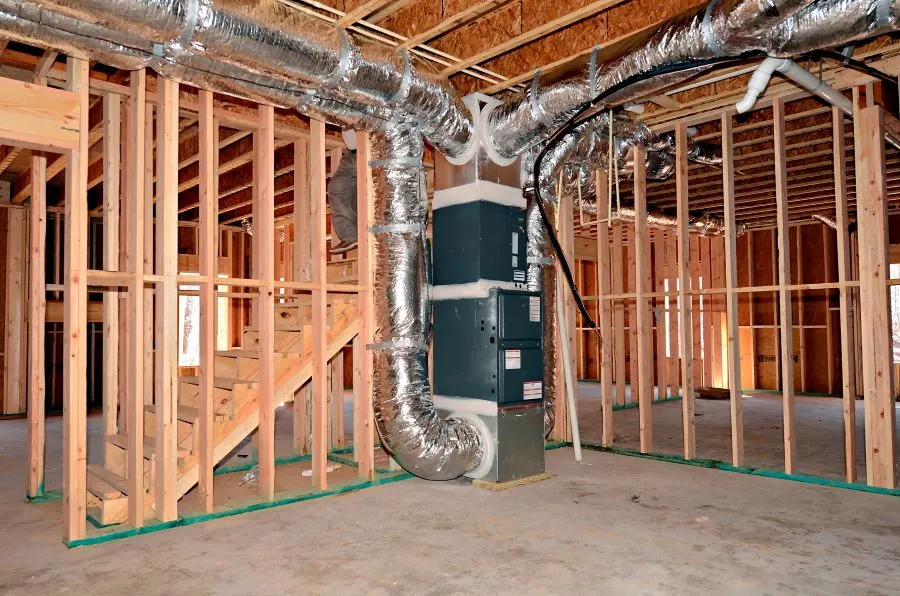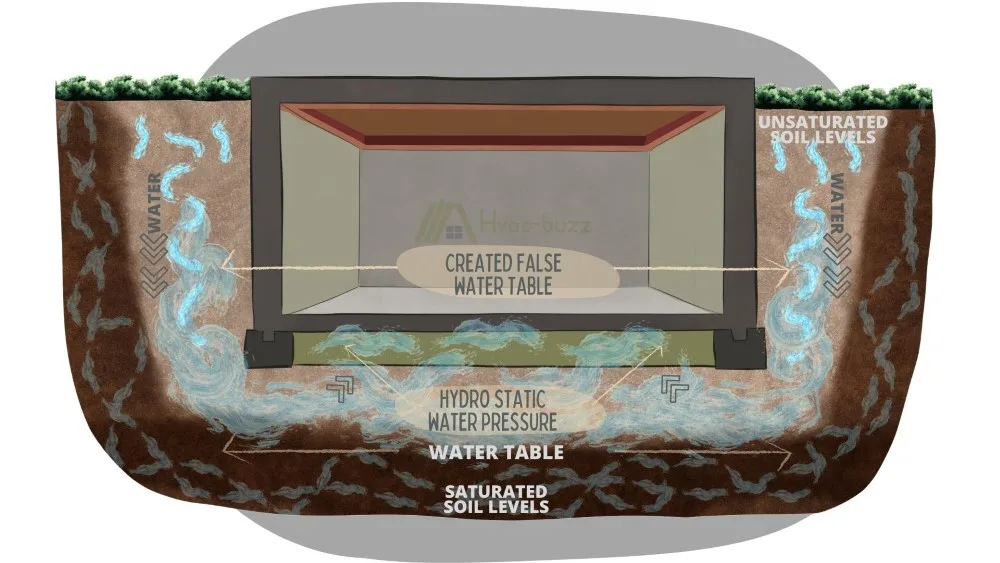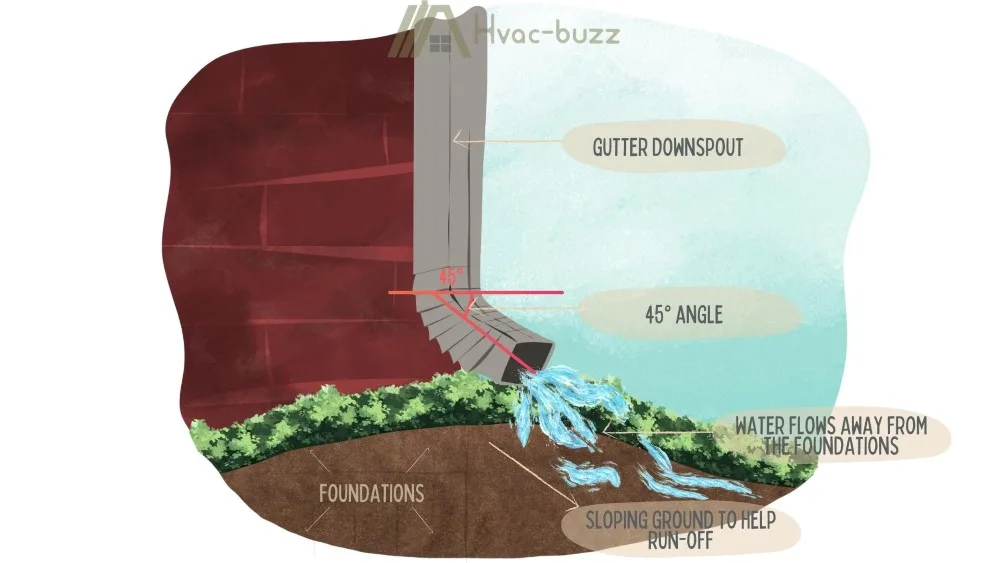Basements seem to easily adopt their own climate separate from that of the rest of the house. They are prone to moisture, so they often end up feeling cold and wet or like a tropical jungle.
Insulation can help control how the moisture manifests in your basement, but if you want to directly address the moisture in your basement, you will need to look into the causes of the humidity and how to address it. Generally, you will have to address draining, cracking, leaking, ventilation, or appliances.

Insulating your basement cannot reduce the humidity because it is designed to help control temperature. Insulation can help reduce humidity by keeping the air colder or reducing condensation by keeping the air warmer. However, it cannot change the moisture levels in the air.
What Is the Purpose of Insulation?
Insulation is designed to provide a protective layer in buildings for temperature control.
Insulation mainly functions by slowing convection, which is the flow of heat through materials, thereby helping to keep warm air inside or outside of your home.
Insulation works on the flow of heat, which means that it does not directly act on the moisture content in the air. However, by acting on the temperature of the air, insulation can indirectly impact humidity.
If you are interested in knowing more about insulation, I have an article explaining the Unfinished Basement Insulation Code.
Insulation Can Reduce Air’s Ability to Hold Water
Temperature affects the retainable moisture content of air as cold air holds less moisture than hot air.
A cold basement will be less humid.
Basements are one of the coldest areas in the house (if you don’t manage the airflow), and this means that naturally, the air in your basement should hold less water. An insulated basement will have extra help in holding that coolness, and therefore, will have even less ability to hold moisture.
Unfortunately, there is a limit to how cold you should let your basement become. After a certain point, that cold air will start causing condensation, which results in cloud droplets.
Insulation Can Reduce Condensation
Insulation can reduce condensation in your basement by increasing evaporation, but this increases humidity.

As mentioned above, insulation doesn’t work on air moisture levels. It can make condensation better or worse depending on how cool or hot your basement is with the insulation.
If your basement is too cold, more condensation will occur in the already cold-prone basement, as that moisture can’t be held by the air.
A warmer basement will hold more water vapor, meaning less condensation will form. But if that moisture stays in the air, it will contribute to humidity.
Insulating basement windows, i.e., double-glazing them, will also prevent the inner panes from becoming so cold, thereby reducing condensation forming on the glass.
If you are looking to insulate your basement, but you don’t want to replace your windows if there is no need to do so, then you can use any or all of the methods presented in How to Tell if a Window Is Single or Double Glazed to determine if they are already insulated.
Condensation could be seen as more damaging for furniture and surfaces due to the standing water. But, a good goal for a basement is to reduce both condensation and humidity.
Never Insulate a Damp Wall or Floor
Be it in the form of humidity or condensation, there are places in a basement (or anywhere) that you want to keep moisture out of. This is because mold and mildew can grow where there is damp and dark, along with a host of other potential bacteria. Bathrooms are another room for which you actively have to manage moisture levels in order to prevent bathroom mold growth.
You do not want moisture entering your walls and floors, so you need to prevent that, and you certainly do not want to be insulating these damp areas as you will seal all the moisture inside and it will not dry.
Methods for controlling humidity in your basement will be sufficient to either allow your walls and floors to dry or to keep them from becoming damp in the first place. Then, if you are looking to improve the temperature control in your basement, you will be able to insulate the dry walls and floors.
If insulation won’t help with the humidity in your basement, what will? Well, that depends on the reason for the humidity in your basement.
False Water Table
I want to explain a water table and false water table before moving onto basement humidity as it plays a significant role therein.
“The water table is the boundary between the unsaturated zone and the saturated underground. Below the water table, groundwater fills any spaces between sediments and within rock.”
National Geographic Encyclopedia
When a basement is dug, the ground around the area is lifted, backfilled, and tamped back down. This causes the ground to lose some natural density, and a false water table can form around your basement.

The false water table or merely the rising of the natural water table means that water is gathering near the house’s foundation, which can cause issues with leaking through the basement walls and floor.
Basement Humidity: Causes and Solutions
1. Moisture Seeping Through the Walls
Causes:
- Rainy climate.
- Lack of waterproofing.
- Old waterproofing.
- Incorrect drainage: gutter downspouts and ground sloping.

- Leaking from the outside or underground pipes.
Solutions:
- You need proper drainage and waterproofing for all the water that will be saturating the ground to prevent the build-up of a false water table around the basement.
- Waterproofing your basement walls with something like Drylok is a good idea if you struggle with basement humidity, but the walls will have to be dry before application unless you use Drylok’s powedered waterproofer. Both Drylok Original and Drylok Extreme are good options, but you should read my in-depth comparison before making your choice.
- The waterproofing on foundation walls might be degraded due to age, and groundwater is now soaking into your concrete. You will need to call in a contractor to fill in any cracks and reseal the slab. Alternatively, you can do it yourself by simply painting new Drylok over the old Drylok. Proper draining to address the water table will help to preserve the waterproofing.
- Gutters and downspouts are not required by code, but they go a long way toward keeping your foundations dry—if they are installed correctly. Your gutter downspouts should be positioned to direct water away from the foundations of your house, which is helped by ensuring that the ground slopes away from the house.
- Leaking from outside or pipes can be addressed by correctly waterproofing your basement or potentially needing to excavate the damaged water pipes. You can waterproof the interior with sealants, and you can waterproof the exterior by exposing and sealing the basement walls.
- Install a vapor barrier. You can even consider applying Drylok as a vapor barrier.
2. Moisture Seeping Through the Floor
Causes:
- Rainy climate.
- A damaged basement slab.
- Incorrect drainage: gutter downspouts and ground slopes.
- Leaking pipes in the surroundings.
Solutions:
- Install a drainage system sufficient to handle heavy or constant rain and drain fast enough to prevent building hydrostatic pressure. This may include installing more downspouts for your gutters and potentially a water storage tank to help disperse the water during less wet times.
- You can fill the surface or cracks of a damaged basement slab with a high-strength epoxy. This is a good solution but is not permanent and will require repeating. You can also go the carbon fiber route, which reinforces the crack and the surrounding area to provide a more permanent solution.
- Downspouts must be directed away from the foundations, and you can even extend your downspout to allow water to drain further away from the house. This means that your gutters can drain beyond the area of backfill where the water is likely to gather and cause problems.
- Leaking pipes require excavating to address the issue in the long term, and so you will need to hire professionals to tackle the big project.
- Waterproofing the basement floor with a product like Drylok Floor & Wall Waterproofer.
Moisture seeping through the basement floor can erode away at the flooring itself and over time it can lead to the development of holes. You might have a few mysterious basement holes if your house suffered from high levels of moisture and humidity in previous years.
3. Humid Climate
Humid climates naturally have a high water content in the air. This means that you have to face the elements to dehumidify your basement, but it’s manageable.
Solutions:
- You can use dehumidifiers (such as the unit pictured below), which is an effective way to control the moisture content in your basement. But you need to make sure that they don’t end up being counter-productive by filtering the humidity back into the room. You need to give them a place to vent outside.
- 4,500 sq ft Large Dehumidifier: Our 15.4 x 11 x 24.3 inches dehumidifier with 1.6 gallon water tank capacity removes up to 50 pints (70 Pint 2012 DOE Standard) from the air per day depending on...
- Designed For Modern Home: That most dehumidifiers are clunky eyesores is news to nobody. We designed with the modern consumer in mind: a sleek clean look, convenient built-in wheels and handles, and a...
- Super Easy To Use: Dehumidifiers don’t need to be complicated, so ours isn’t. Adjust to your ideal moisture setting, then let it run its continuous 24-hour cycle until the tank is full, at which...
- Eliminates Moisture Effectively: Our portable dehumidifier reduces moisture through its built-in pump compressor. It also features a Turbo mode that increases fan speed from Normal Air CFM 165 (cubic...
Last update on 2024-03-27 / Affiliate links / Images from Amazon Product Advertising API
- Installing an exhaust fan, like the AIRTITAN Basement Ventilator Fan, can help to extract the moisture in the air to prevent humidity and condensation.
- A fan system designed to provide ventilation and moisture control for crawl spaces and basements.
- Reduces humidity by creating exhaust airflow to expel foul odors and stale air from your home.
- Programmable controller with corded probe, can adjust airflow in response to temperatures and humidity.
- Heavy-duty stainless steel frame with IP-44 rated fans to be highly resistant to liquids and dust.
Last update on 2024-03-27 / Affiliate links / Images from Amazon Product Advertising API
- You can also introduce plants into your basement. Some plants that are particularly good at extracting moisture from the air, include peace lilies, Boston ferns, English ivy, parlor palms, and Tillandsia.
4. Undiscovered Basement Leaks
It’s not always a leak from the outside that is causing excess moisture in your basement. The leak may be hiding away somewhere in the basement.
There are enough water pipes or water pockets around your basement that the leak could be under your nose. Unfortunately, you are going to have to go on a scavenger hunt for the leak.
Water leaks don’t just cause damp issues, they bring a lot of dirt into your basement.
Solutions
- Repairing or replacing any damaged or faulty pipes around your basement will help get rid of the moisture. This can be pipes in the basement wall, which will require opening the wall (seeking professional services is recommended), or this could be pipe connections for your appliances like your water heater or washer.
- If you are looking at more direct leaks in the shell of your basement, you will need to seal these, and this will probably need retouching every few months. Alternatively, you can call in a contractor and have your basement shell refurbished.
5. Faulty HVAC Systems
Home ventilation is essential to controlling the moisture and temperature levels in your house. In a faulty system, you may find that your HVAC system is dumping the moist air, which is supposed to be exhausting outdoors, into the basement through the supply vent.
Solutions:
- Check your backdraft dampers. If one has become worn, damaged, or is incorrectly installed, then you may find that the damper is allowing that moist air to flow back into your ventilation system, where it is being distributed back into the house or basement. The Ultimate Guide to Backdraft Dampers is a helpful resource for addressing these dampers.
- Ensure that any installed exhaust fan is the correct size for the ducts, as this can affect the efficiency of the exhaust system. If not, replace the fan with an appropriate size.
6. Poor Ventilation
It is not unusual for a basement to be subject to higher moisture levels. However, your basement might be overly humid simply because there is poor ventilation and humid air isn’t moving out of the basement.
Proper ventilation will make a big difference to the humidity and can even combat the worst of the moisture that comes from ground seepage, etc.
Solutions:
- Use a natural airflow system by opening two windows at the highest points in your house and two at the lowest. This will promote the flowing of air out of the basement as the hot air from the higher levels of the house pulls the colder air from the bottom levels out. This is a great technique if you want to use cold basement air to cool the upstairs.
- Making strategic use of fans can enhance your house’s natural ventilation or ventilation system, especially if you don’t have basement windows. The hardest part, generally, of the process is getting the air out of the basement. So, you can position high-velocity or window fans to blow the basement air up and out of the basement and into the rest of the house.
7. Moisture/Heat-Generating Appliances
Some of the appliances commonly installed in a basement are those that might be contributing to the humidity in your basement.
Solutions:
- Your clothes dryer removes moisture from your clothes and might be putting that into your basement air instead of through the ventilation system. This is why an exhaust fan is necessary for a laundry area and will help vent out the humid air.
- Insulate your water heater or furnace pipes. In a cold basement, condensation can form around the heated water pipes, pulling unnecessary moisture into the air in the basement. Insulating the pipes will help protect them and the heated water inside from the cold.
Sources
https://www.energy.gov/energysaver/insulation
https://scied.ucar.edu/learning-zone/how-weather-works/humidity
https://www.britannica.com/science/humidity
https://www.epa.gov/mold/what-are-main-ways-control-moisture-your-home
https://www.angi.com/articles/comparing-basement-waterproofing-methods.htm
https://www.nationalgeographic.org/encyclopedia/water-table/
https://americandry.com/wet-basement-problem-false-water-table/
https://www.uswaterproofing.com/learning-center/how-ground-water-causes-basement-flooding
https://www.energy.gov/energysaver/articles/5-ways-keep-your-home-comfortable-humid-climate
https://www.healthline.com/health/humidifying-plants
https://www.gardeningknowhow.com/houseplants/hpgen/plants-that-absorb-humidity.htm
https://basc.pnnl.gov/resource-guides/gutters-and-downspouts




